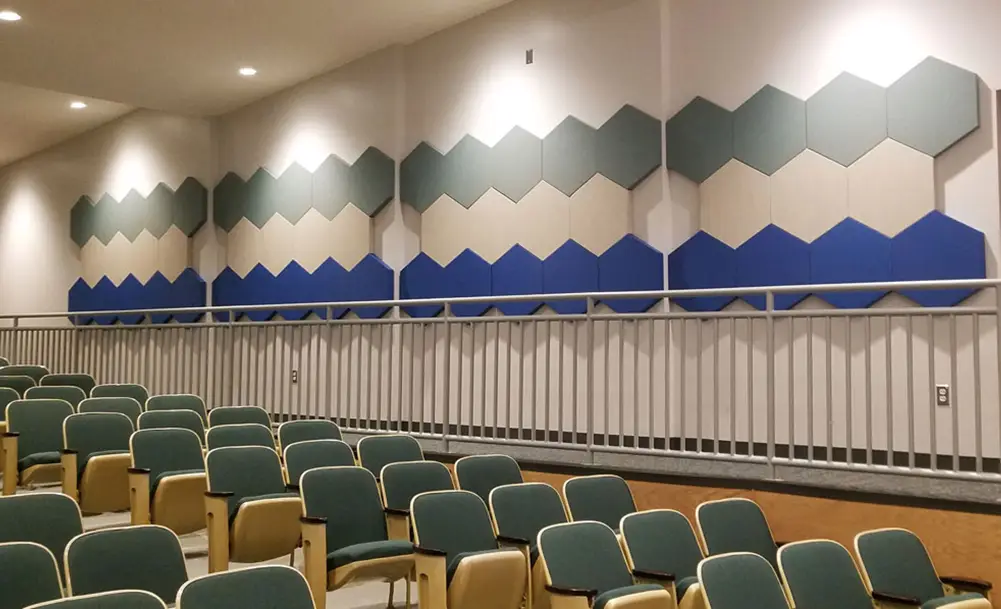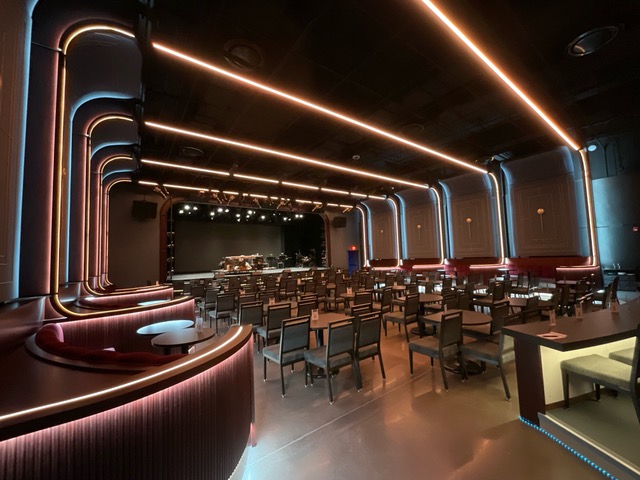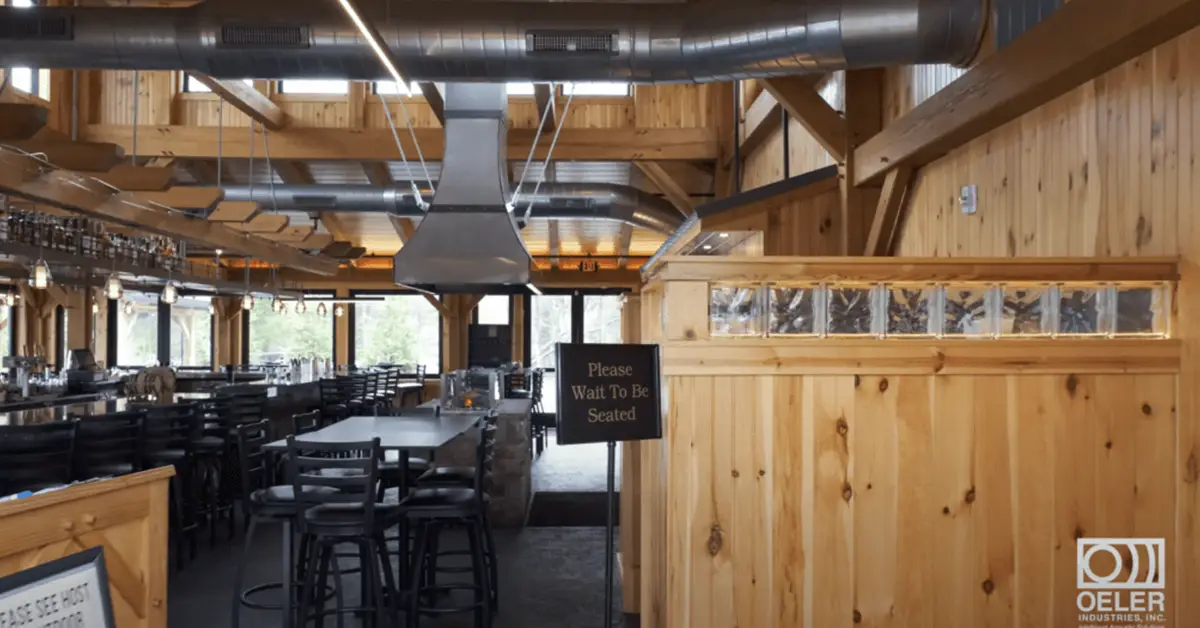X

Used to control reverberation time or harsh reflections, introducing comfortable communications within a space.
Acoustic absorption refers to a material, structure or object absorbing sound energy when sound waves collide with it, as opposed to reflecting the energy. Part of the absorbed energy is transformed into heat and part is transmitted. The energy transformed into heat is said to have been ‘lost’. In general soft, pliable, porous materials such as fiberglass serve as good acoustic absorbers, whereas dense, hard, impenetrable materials like metals or drywall reflect most of the sound waves.
Acoustic absorption is measured in Sabins. One square foot of 100% absorbing material has a value of one Sabin. A material’s ability to absorb sound is represented in NRC, Noise Reduction Coefficient, which is the arithmetic average, to the nearest multiple of 0.05, of the sound absorption coefficients in the 1/3 octave bands centered at 250 Hz, 500 Hz, 1000 Hz, and 2000 Hz. By convention, the maximum NRC used is 0.95, even though the published laboratory average may be greater due to variation in test methods. For example, a one inch thick acoustic panel with an NRC of .85 would absorb 85% of the sound hitting it. Since lower frequencies have a longer wavelength, they are much harder to absorb then higher frequencies such as in the speech range. A 500 Hz sound wave moving through air is about two feet long, so it would require a two foot thick absorber to be fully attenuated.
Absorption materials are an important tool in the field of acoustics. When sound is produced in a space with a lot of hard parallel surfaces, a large number of echoes build up and then slowly decay as the sound is absorbed by the walls and air, creating reverberation, or reverb, which can greatly reduce speech intelligibility and increase overall sound levels. Acoustic wall and ceiling absorbers are used to cut down on these harsh reflections. Typical areas that frequently incur reverberation issues are conference rooms, classrooms, gymnasiums, and houses of worship. Applications such as sound recording studios require 80% to 100% absorption coverage so that the microphones only pick up the artist and instruments and not the reflected sound.
Acoustic engineers use absorption materials in the design and construction of anechoic chambers. Anechoic chambers are commonly used in acoustics to conduct experiments in nominally “free field” conditions; free-field meaning that there are no reflected signals. By heavily lining the inside surfaces of the chamber with absorption material, sound energy travels away from the source with almost none reflected back. Absorption panels used in anechoic chambers are typically designed in pyramid shapes to increase surface area, and varying thicknesses to absorb a wide spectrum of frequencies. A typical application for anechoic chamber testing would be to measure engine noise in the automotive industry.
The most effective sound control products use a combination of absorption and blocking. For example, if you constructed a sound enclosure around a machine operator with a heavy reflective material to block noise from the surrounding work area, although the sound levels outside the enclosure would be lowered, the sound level inside the enclosure would increase due to the reflective sound energy bouncing off of all the hard surfaces. If you use a composite barrier/absorber however, you prevent noise levels inside the enclosure from increasing, plus achieve an additional 3 to 5 dBA noise reduction outside the enclosure. Since reflective sound builds on the initial instance raising overall sound levels, absorbing these reflections reduces the amount of noise that needs to be blocked by the barrier material.
The rule of thumb to remember in controlling noise is that light porous materials are good sound absorbers, and heavy dense materials are good sound blockers. Products such as acoustic wall and ceiling panels are used to tone down harsh reflections in a space, reducing reverberation and improving speech intelligibility, while products such as vinyl noise barriers are used to block noise by increasing the Sound Transmission Class, (STC) of wall or ceiling partition.
Used to control reverberation time or harsh reflections, introducing comfortable communications within a space.
Variety of core materials and face materials can be combined to create long-lasting absorption systems that can withstand a variety of climates.
Metal, wood, fabric, PET, and custom printing ensure acoustic panels look great in any space.

After a 13-month hiatus, the Greer Cabaret Theater made its return in September 2023 following a $6 million renovation, which included significant improvements to the acoustic environment. The renovation project was a joint effort between DLR Group from Ohio and mossArchitects based in Pittsburgh. DLR Group, leveraging their in-house acoustic specialist, spearheaded the design of […]

As the holiday season is in full swing, businesses set out on a mission to craft unforgettable experiences for customers. With all the festive decorations and sparkling displays, the often-overlooked yet influential element of sound, more specifically the acoustic engineering of the space, has the potential to transform these experiences into cherished memories. Whether in […]

Today, in the tough world of business competition, your brand goes beyond just a logo. When people step into your physical spaces, whether it is a store, office, or restaurant, they enter a carefully curated world that tells your brand’s story. This story goes beyond mere looks – it is about creating a connection that […]
As experts in acoustic design, we can help develop an effective, comfortable, and aesthetically pleasing acoustic solution that helps your organization improve the quality and productivity of time spent in your facility.
Our project managers will work with you to assess your noise control needs. With a keen focus on delivering a turn-key solution, we can help design an acoustic package to solve any noise issue.